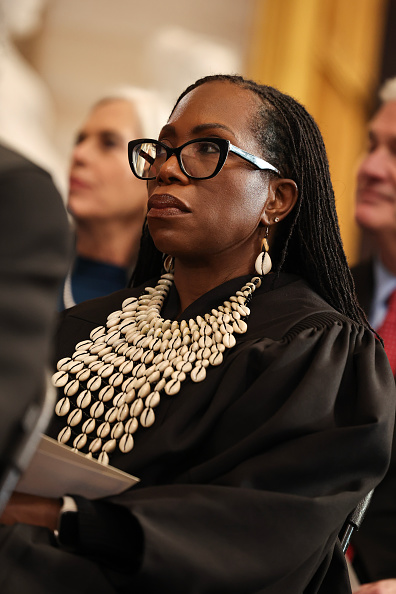Chemerinsky: These two decisions highlight how Scalia's absence has affected the court

Erwin Chemerinsky.
As the U.S. Supreme Court enters the last month of its term, the impact of having only eight justices already is clear. Some of the most high-profile cases of the year are not being decided, or perhaps even worse, are being resolved on narrow grounds that create more confusion than clarity in the law.
A 4-4 tie, which affirms the lower court without opinion by an evenly divided high court, is not a problem when there is no split among the lower courts and there already is a clear prior decision on point. In fact, in a couple of cases, the justices divided 4-4 on whether to overrule a precedent. In Friedrichs v. California Teachers Association, the issue was whether to overrule Abood v. Detroit Board of Education, which held that non-union members of a public employees’ union can be required to pay the share of the union dues that go to support the collective bargaining activities of the union. In Franchise Tax Board of California v. Hyatt, one of the questions presented was whether to overrule Nevada v. Hall, which held that a state may be sued in the courts of another state.
the court’s 4-4 split in these cases simply mean that the earlier Supreme Court precedents stand. Perhaps when there is a ninth justice the court will again take up the issues.
But the lack of a majority is problematic when it leaves a split in the circuits and when it creates confusion in the law. This is what happened in two cases that came down on May 16.
Zubik v. Burwell
The Patient Protection and Affordable Care Act required that the Department of Health and Human Services promulgate regulations to ensure that employer-provided health insurance includes coverage for preventative health care for women. One aspect of these rules concerns contraceptive coverage. Religious institutions that oppose contraception, such as the Catholic Church, are exempt under the regulations from having to provide this coverage to their employees.
For-profit companies that employ more than 50 people must provide insurance coverage for the 20 types of contraceptives approved by the Food and Drug Administration for women. In 2014, in Burwell v. Hobby Lobby, the Supreme Court ruled 5-4 that this violated a federal law—the Religious Freedom Restoration Act—when applied to a close corporation that objects on religious grounds to providing contraceptive coverage.
Finally, not-for-profit institutions that are affiliated with religions that oppose contraception—like a Catholic university—can get out of this requirement by filing a form attesting to this with the insurance provider or the Department of Health and Human Services. Then, at no cost to the employer, the insurance provider and the federal government must provide contraceptive coverage for women employees. The insurance provider must supply services under a plan that is separate and distinct from the objecting employer’s insurance plan. Employers objected, however, that this makes them “complicit” in the provision of contraceptives. Their filing of the form leads to the provision of contraceptives to women, albeit by others. They claim that this violates the Religious Freedom Restoration Act, which prohibits the federal government substantially burdening a person’s religious beliefs unless its action is necessary to achieve a compelling government purpose.
Several federal courts of appeals rejected this argument, but one accepted it. It seemed clear from the oral argument that the justices were split 4-4. Soon after oral argument, the justices did something unprecedented: they proposed their own compromise and asked the parties to brief it. The court requested supplemental briefing from the parties addressing “whether contraceptive coverage could be provided to petitioners’ employees, through petitioners’ insurance companies, without any such notice from petitioners.” The religious institutions filed a brief saying that this would be satisfactory to them. The government, though, was highly skeptical and indicated many problems with this approach.
On May 16, the court, in a short per curiam opinion, remanded the cases back to the courts of appeals. The high court declared: “Both petitioners and the Government now confirm that such an option is feasible… . Given the gravity of the dispute and the substantial clarification and refinement in the positions of the parties, the parties on remand should be afforded an opportunity to arrive at an approach going forward that accommodates petitioners’ religious exercise while at the same time ensuring that women covered by petitioners’ health plans ‘receive full and equal health coverage, including contraceptive coverage.’ We anticipate that the courts of Appeals will allow the parties sufficient time to resolve any outstanding issues between them.”
the court was clear that it was deciding nothing, and explicitly stated: “the court expresses no view on the merits of the cases. In particular, the court does not decide whether petitioners’ religious exercise has been substantially burdened, whether the government has a compelling interest, or whether the current regulations are the least restrictive means of serving that interest.” Justice Sonia Sotomayor wrote a concurring opinion, joined by Justice Ruth Bader Ginsburg, declaring: “Lower courts, therefore, should not construe either today’s per curiam or our order of March 29, 2016, as signals of where this Court stands.”
What now? Perhaps the Obama administration will rewrite the regulation along the lines the court suggests. But why should it? They won in every federal court of appeals except one. They should be confident that if a Democratic appointee replaces Justice Antonin Scalia there likely will be five votes for their position. In the meantime, all of the lower court decisions were vacated. For now, the parties and the law are left in a state of uncertainty.
Spokeo v. Robins
Unlike in Zubik, the court issued a decision in Spokeo v. Robins, but it is one sure to create great confusion in the law. Spokeo owns and operates a website that provides in-depth reports containing personal information about individuals. Thomas Robins alleged that his Spokeo profile was filled with inaccuracies, including about his employment, his marital status and whether he had children. Robins sued Spokeo for violating the Fair Credit Reporting Act. Among other things, this law authorizes victims of “willful” violations to recover statutory damages of “not less than $100 and not more than $1,000.”
The issue before the court was whether Robins had standing to sue. The Ninth Circuit held that Robins had standing because Congress, by statute, had created a right and the infringement of that statutory right was sufficient for standing. The court, in a 6-2 decision, reversed and remanded the case. Significantly, the court did not change the law: Congress, by statute, can create rights the infringement of which is sufficient for standing to sue in federal courts. The court approvingly quoted Justice Anthony Kennedy’s opinion in Lujan v. Defenders of Wildlife that “Congress has the power to define injuries and articulate chains of causation that will give rise to a case or controversy where none existed before.”
But the court, in an opinion by Justice Samuel A. Alito, said that in order to have an injury sufficient for standing it must be “particularized” and “concrete.” This, of course, is familiar language that has appeared in many Supreme Court cases about standing. The difference, though, is that never before has the court treated these as two distinct requirements. The court said that “For an injury to be ‘particularized,’ it ‘must affect the plaintiff in a personal and individual way,’” and the court found that Robins met this requirement.
The court, however, said that the Ninth Circuit had not considered whether the injury was “concrete.” The issue for this case on remand, and for all other civil litigation in federal courts, is what does it mean for an injury to be “concrete?” Here’s what the court says: “concrete” injury must be ‘de facto’; that is, it must actually exist. When we have used the adjective ‘concrete,’ we have meant to convey the usual meaning of the term—‘real,’ and not ‘abstract.’ Concreteness, therefore, is quite different from particularization. ‘Concrete’ is not, however, necessarily synonymous with ‘tangible.’ Although tangible injuries are perhaps easier to recognize, we have confirmed in many of our previous cases that intangible injuries can nevertheless be concrete.”
But this definition of “concrete” gives little guidance to lower courts. Moreover, though the court says that “particularized” and “concreteness” are distinct requirements that must be met in order for there to be an injury sufficient for standing, the difference between these two is unclear.
My surmise is that the court was split 4-4 and, like in Zubik, looked for a compromise that would send the case back to the lower courts without resolving it. The court achieved that, but at the expense of creating more confusion in the law.
It is now clear that the court will have to function the rest of this term—and likely most of next—with only eight justices. There is no doubt that this will leave many issues unresolved and, at times, create even more confusion in the law.
Erwin Chemerinsky is Dean and Distinguished Professor of Law, and Raymond Pryke Professor of First Amendment Law at the University of California, Irvine School of Law. He is an expert in constitutional law, federal practice, civil rights and civil liberties, and appellate litigation. He’s the author of seven books, including The Case Against the Supreme Court (Viking, 2014).
Write a letter to the editor, share a story tip or update, or report an error.


